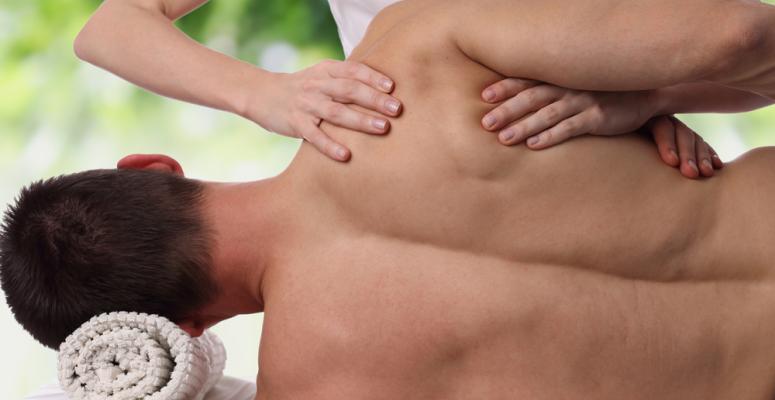
Manual therapy is a type of physical therapy in which the therapist places targeted pressure on your bones and soft tissue in the effort to relieve tension, decrease pain, and mobilize the joints and muscles. In some cases, it can even help restore function in certain body parts after an injury. Some forms of manual therapy are applied with the therapist's bare hands while others involve the use of instruments.
In this article, we'll discuss some manual therapy techniques frequently used in physical therapy, along with their benefits.
What are some frequently used manual therapy techniques?
1. Joint mobilization
Joint mobilization is a manual therapy technique in which the therapist manually applies pressure to a joint to help improve that joint's mobility and range of motion. It is used to treat patients experiencing stiffness or pain in their joints. For example, a patient with golfer's elbow or tendinitis in their shoulder may benefit from the relief that joint mobilization offers.
2. Soft tissue mobilization
Soft tissue mobilization is a manual therapy technique in which the therapist physically stretches and applies pressure to the muscles and ligaments. Soft tissue mobilization breaks up the muscle tissue, which can help relieve tension and reduce inflammation. It can also improve flexibility, so much so that it's often used to restore mobility in joints that lost mobility.
3. Strain-counterstrain therapy
Strain-counterstrain therapy, often called positional release therapy, is a type of manual therapy designed in which the therapist holds your body in a series of strategic positions for 90-second intervals. It's beneficial because it allows the sensory receptors within the muscle to relax in a position that's both comfortable and natural but that the body might not otherwise be positioned in. It's a gentle but effective technique for relieving tension in the muscles.
4. Myofascial release
Myofascial release therapy is a manual therapy technique that specifically targets the fascia, which is the thick tissue that coats all the bones and muscles in our body. The physical therapist feels around for stiff or tight spots in the fascia and manually manipulates them to restore pliability. This technique relieves the joints and muscles of any pressure placed on them. It is repeated on each trigger point until the therapist can no longer identify any tension in the body. It is often used to treat back pain, sciatica and other forms of chronic pain.
5. Instrument-assisted soft tissue mobilization (IASTM)
Instrument-assisted soft tissue mobilization (IASTM) is a manual therapy technique that involves the use of tools (instruments) to mobilize the muscles and joints. These tools vary in shape and size but are contoured to various parts of the body, giving the physical therapist extra leverage with which to apply pressure to the body.
6. Dry needling
Dry needling is a physical therapy modality that involves the use of thin needles inserted into the skin to break up stiff sections of muscle fiber called trigger points. The goal is to relieve muscle tension, decrease pain, increase blood flow and restore mobility. Dry needling sounds like acupuncture but it is in fact very different. Whereas acupuncture aims to short-circuit pain patterns, dry needling targets muscles currently experiencing pain. Like other manual therapy techniques, it is most effective when used as part of a larger treatment plan that involves therapeutic exercise and other forms of treatment.
7. Active Release Techniques (ART)
Active Release Techniques (ART) is a branded, proprietary manual therapy technique performed at some physical therapy clinics (including some Alliance locations). During an ART session, the therapist applies heavy pressure on soft tissue that has been altered in shape or size by a repetitive strain injury or repeated acute injuries. Simultaneously, the patient is instructed to move in specific ways that stretch the soft tissue. It is used to treat many different types of chronic pain.
Alliance PTP is ready to help you find top-notch manual therapy
At Alliance Physical Therapy Partners, we're proudly bringing together physical therapy practices across the country to help people get the high-quality PT they need. Want to see a physical therapist in person? We can put you in touch with an Alliance PTP partner that's close to you and that can provide manual therapy. Not keen on in-person PT sessions or not close to an Alliance PTP partner? No worries. We also offer effective and affordable virtual physical therapy through our Agile Virtual Physical Therapy platform. Contact our team today so we can help you find the most effective physical therapy services for your injury or condition.
Get Help at a Location Near You
